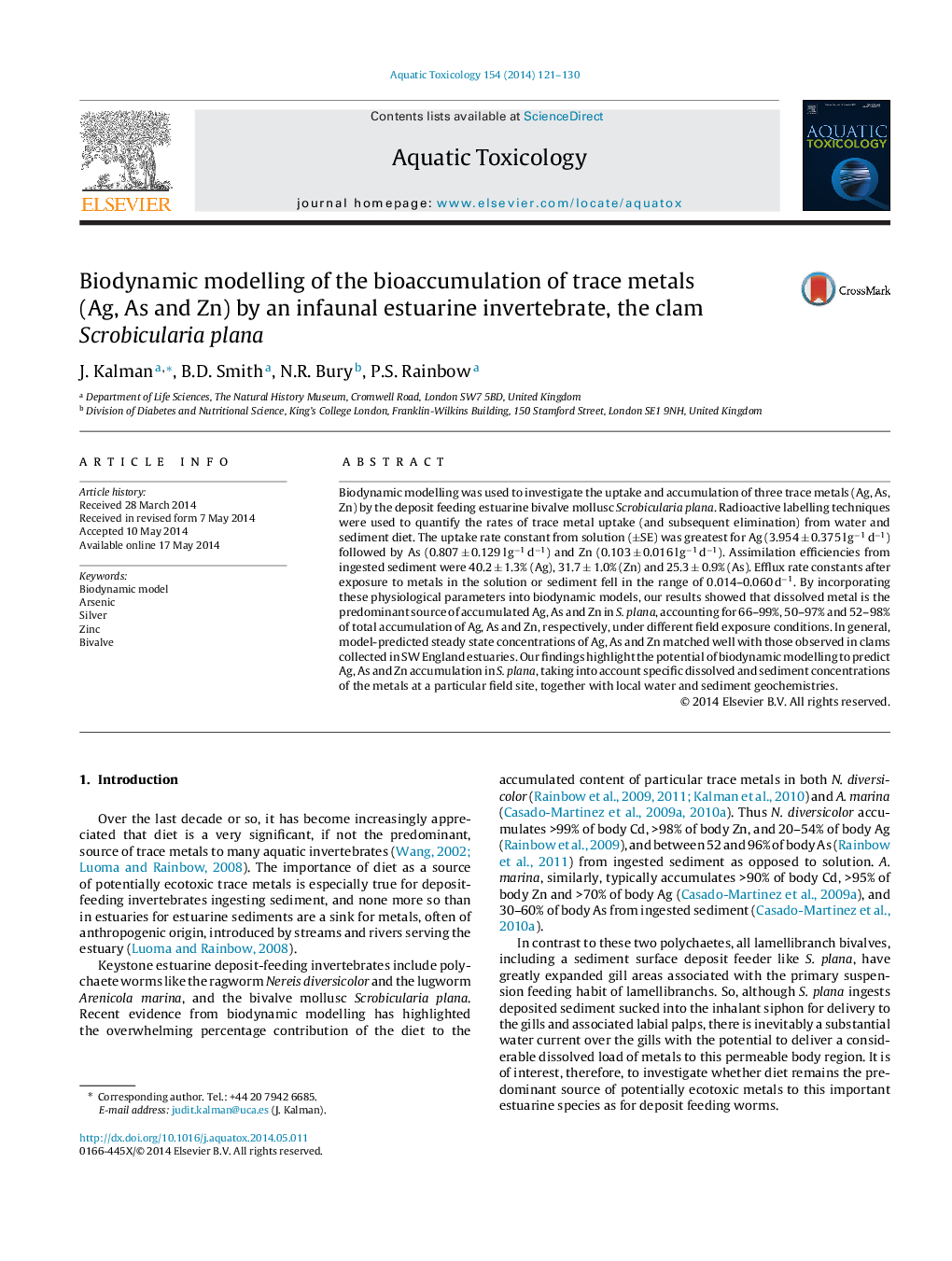| Article ID | Journal | Published Year | Pages | File Type |
|---|---|---|---|---|
| 4529211 | Aquatic Toxicology | 2014 | 10 Pages |
•Biodynamic modelling is used to predict accumulation of Ag, As and Zn in S. plana.•Dissolved and sediment-associated metals contribute to total metal bioaccumulation.•Relative importance varies with water and sediment concentrations and geochemistries.
Biodynamic modelling was used to investigate the uptake and accumulation of three trace metals (Ag, As, Zn) by the deposit feeding estuarine bivalve mollusc Scrobicularia plana. Radioactive labelling techniques were used to quantify the rates of trace metal uptake (and subsequent elimination) from water and sediment diet. The uptake rate constant from solution (±SE) was greatest for Ag (3.954 ± 0.375 l g−1 d−1) followed by As (0.807 ± 0.129 l g−1 d−1) and Zn (0.103 ± 0.016 l g−1 d−1). Assimilation efficiencies from ingested sediment were 40.2 ± 1.3% (Ag), 31.7 ± 1.0% (Zn) and 25.3 ± 0.9% (As). Efflux rate constants after exposure to metals in the solution or sediment fell in the range of 0.014–0.060 d−1. By incorporating these physiological parameters into biodynamic models, our results showed that dissolved metal is the predominant source of accumulated Ag, As and Zn in S. plana, accounting for 66–99%, 50–97% and 52–98% of total accumulation of Ag, As and Zn, respectively, under different field exposure conditions. In general, model-predicted steady state concentrations of Ag, As and Zn matched well with those observed in clams collected in SW England estuaries. Our findings highlight the potential of biodynamic modelling to predict Ag, As and Zn accumulation in S. plana, taking into account specific dissolved and sediment concentrations of the metals at a particular field site, together with local water and sediment geochemistries.
